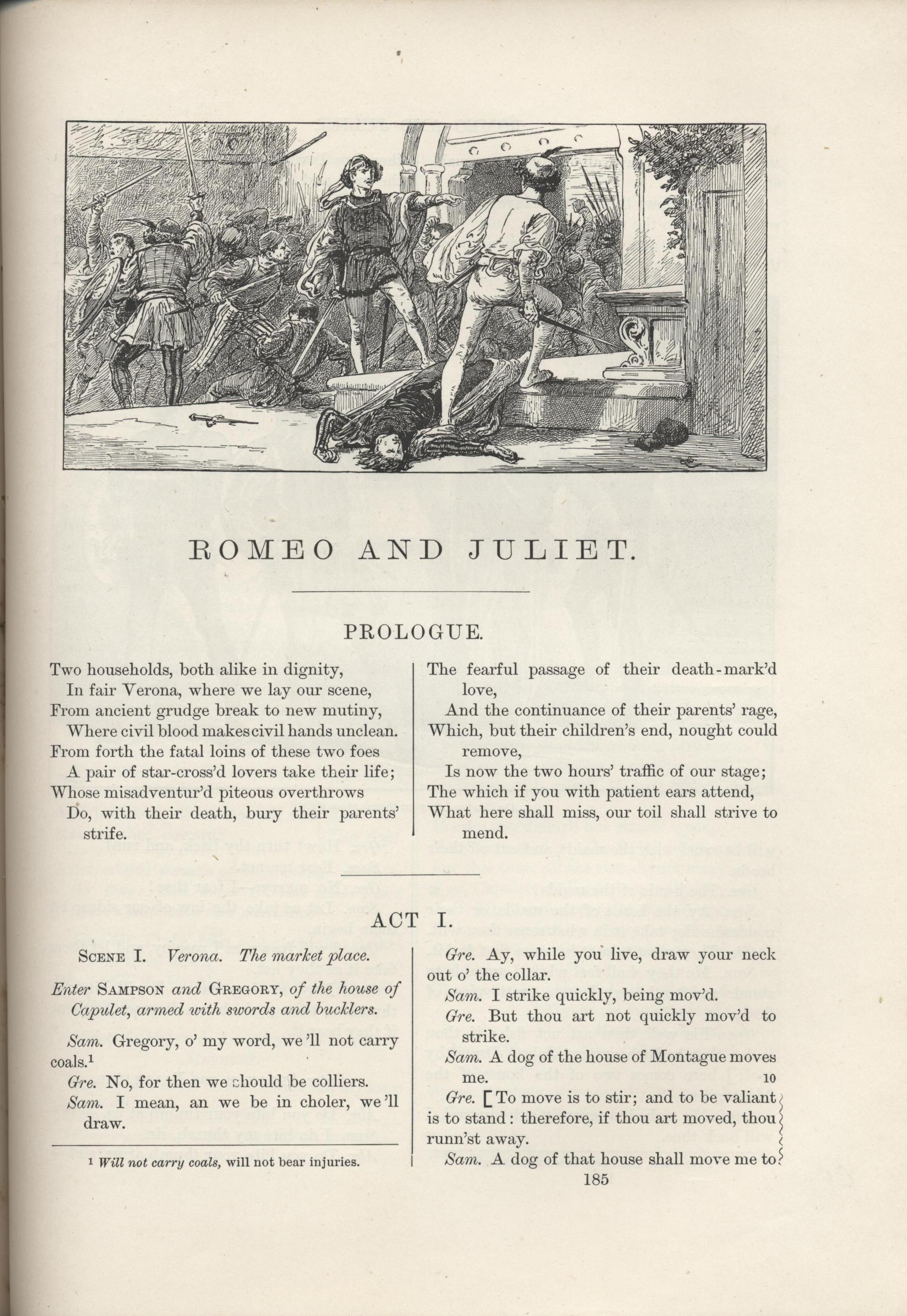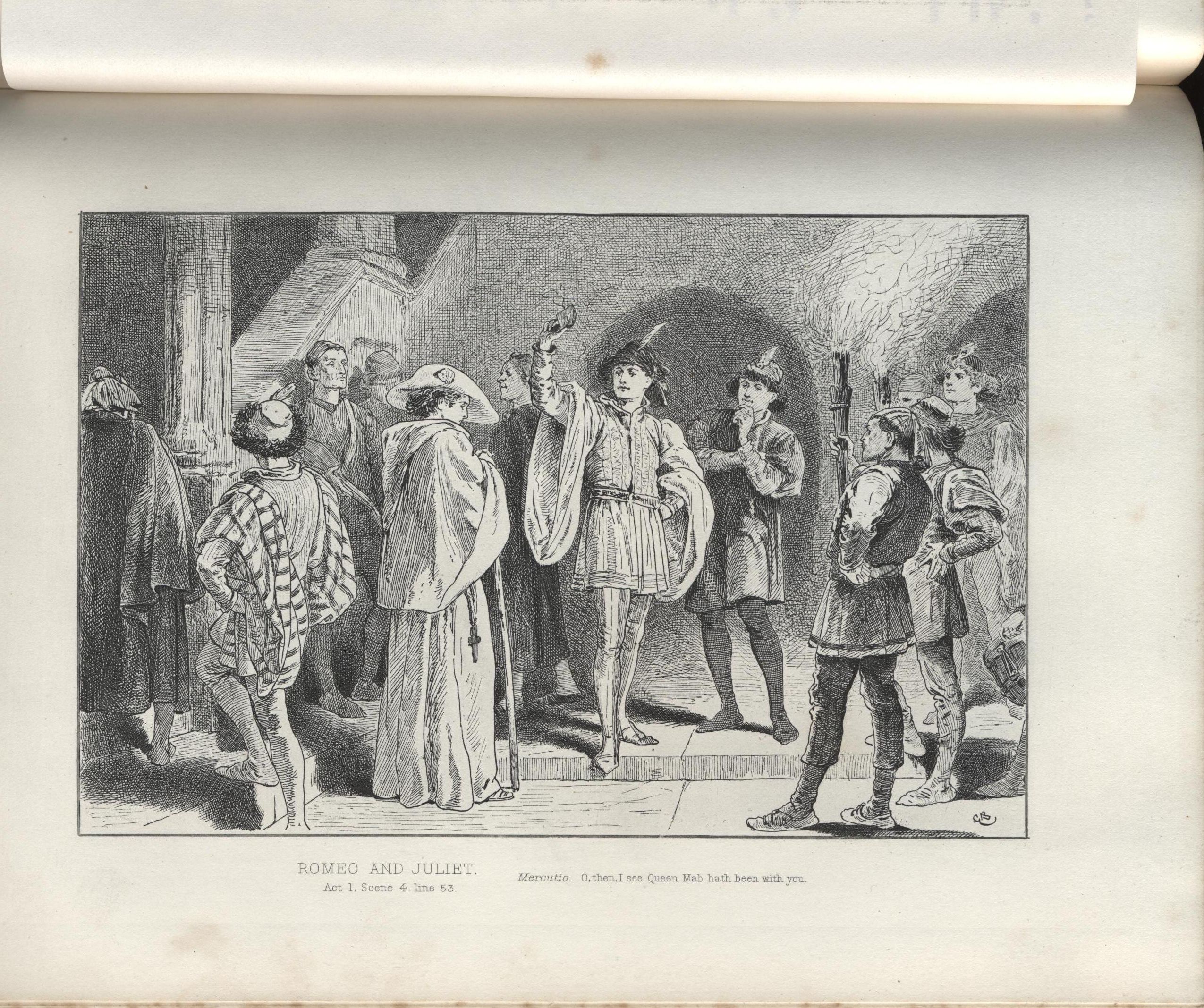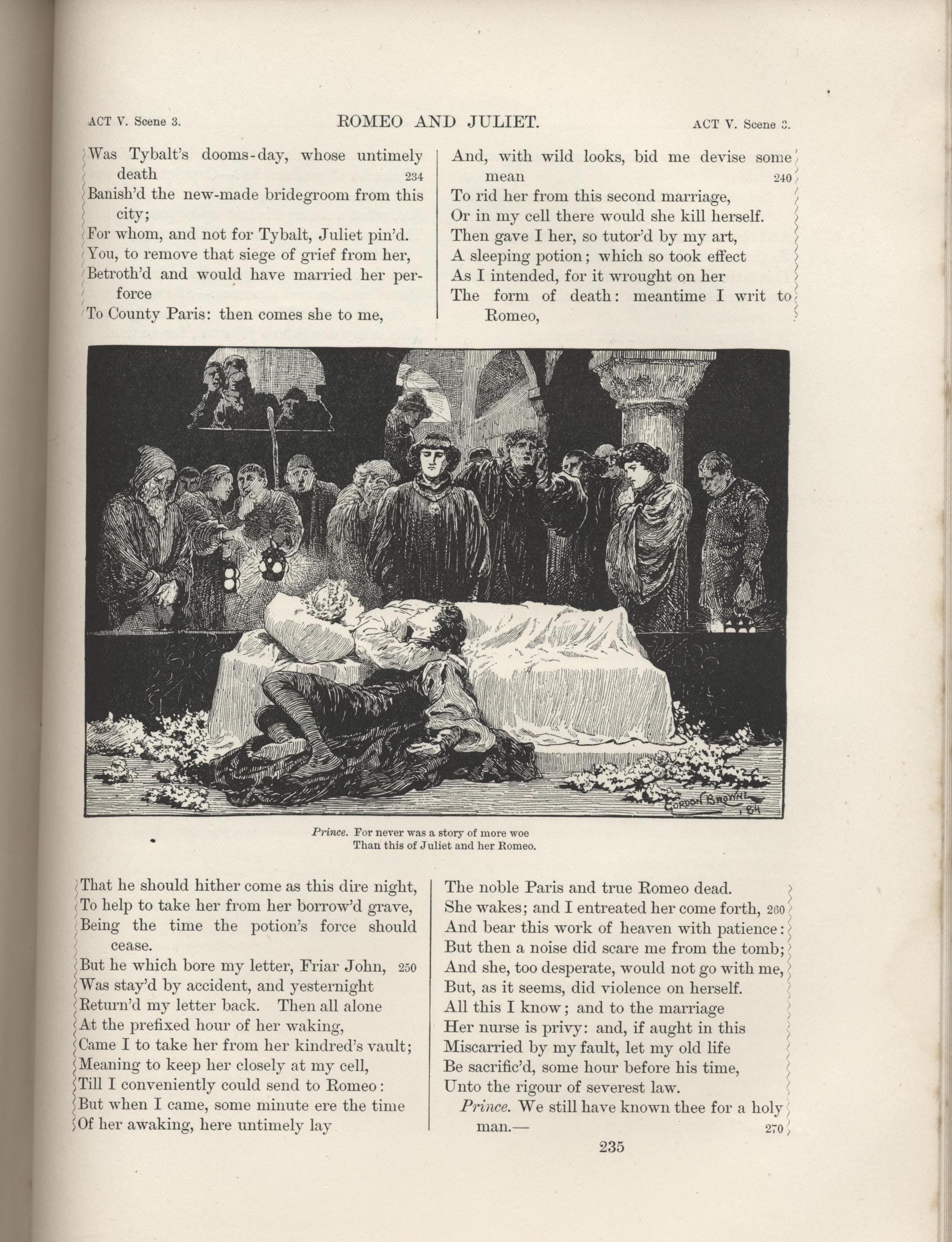
Thoughts on the Illustrated Edition
Stuart
Sillars
The
University of Bergen
Stuart.Sillars@if.uib.no
- Despite
the flood of recent discussions of the mechanisms of reading–histories of the
book, analyses of readers’ responses, assertions of cognitive assimilation–the
process of reading itself, the interaction between physiology, skill,
convention and the individual, remains as mysterious as ever. Bewilderingly
complex in its most simple applications, like reading a newspaper or magazine, it
assumes far greater breadth in the approach to an edition of a play, intended
for performance, which has illustrations, designed specifically for individual
perusal. The tradition of such volumes is not long, lasting a little over two
centuries, yet embraces considerable variety in style, stance and format.
Paradoxically, the very popularity of the form has led it to be neglected by
academics and to be overshadowed by the history and practices of the scholarly
edition. Nowhere is this paradox more apparent than in the works of
Shakespeare; yet, especially in the middle years of the nineteenth century, the
illustrated edition was arguably the most common way in which to gain initial
acquaintance with the plays.
- The
complexities are demonstrated fully in one of the later editions of the
tradition, known familiarly as The Henry Irving Shakespeare. The title
reveals one of the grounds of its popularity in the naming of the most famous
Shakespearean of the age, but it also raises perplexities
about the nature and extent of the relation between text and performances. Do the volumes present a record of the plays as performed at Irving’s Lyceum Theatre, or a series of quite separate suggestions for how they might be produced by subsequent companies? Are they instead designed for the private, individual reader, to be approached separately from any rendition on stage? How do Gordon Browne’s copious illustrations to the volumes reflect, record or depart from stage practices? Taking these and other complexities together, we are left with a larger question: how do the volumes configure the plays for readers encountering the plays for the first time, those familiar with them from frequent performances, or those who have read the texts in earlier editions?
- Some
of these questions can be answered explicitly from the prefatory material with
which the series was issued, although, as always, this must be treated with
caution. One of the most direct claims concerns the text itself. Passages from
every play are enclosed between square brackets and framed by wavy lines, to
suggest that they may be cut in performance. Although not claimed to reflect Irving’s
own practice, in many cases they rest closely on his performances, so that the
edition is often referred to as an “acting edition.” If they do reflect
accurately Lyceum practice, the cuts clearly make the edition a valuable source
for the theatre historian, and also for readers anxious to recapture and
prolong the experience in the theatre. But the preface claims instead that such
passages are those that may be “easily or desirably omitted without breach of
continuity, in reading the play to public or private audiences, and in
representing it on the stage” (“Prospectus” 2). Amateur producers and would-be
thespians were a large and growing constituency at the end of the century, so
this makes sense as a marketing ploy; but the material form of the volumes
argues against such use. The large quarto format, bound in gold-embossed
boards, with text in double columns, does not lend itself to use in rehearsal.
Nor do the full contents of the volumes, embracing the critical apparatus of
stage history, literary history, glossarial footnotes and several pages of
appended longer notes. The presence of the illustrations adds another layer of
complexity. Do they attempt to record the actuality of stage performance –
Irving’s or some other conjectural form – or do they locate the action within
an imagined world closer to that of the illustrated novel or the art-engraving?
The text of Romeo and Juliet, one of Irving’s most celebrated, yet much derided,
productions, which engages most directly with the potential conflicts between
stage, study and recreational reading, offers a point from which these concerns
may be approached more directly.[1]
- The
illustrations, as the most immediate feature, also provide the most apparent
point of entry into our discussion of the volume as a configuration of the
play. The sixteen wood engravings after Browne’s designs are listed in the
volume’s preliminary pages as “Passages and Scenes Illustrated,” a heading that
reveals the compound identity of their functions, existing across visual
treatments of textual elements and records or projections of stage enactment. The
sixteen images confirm this range. The very first, the headpiece to Act One, (Figure
1), shows what is in many ways the central driving event of the play: Romeo in
flight after killing Tybalt in a brawl between the two warring houses of Verona.
In itself this is a vivid presentation of action, but its importance goes
further. Coming at the outset of the play, it suggests it to be a tragedy of
action and dynastic conflict, not one of personal loss. This defines the play’s
movement to a new reader, and suggests a new and perhaps unexpected trajectory
to a reader familiar with earlier Victorian productions. The new reader may
also find it puzzling, since it relates to an event from the third act, not the
first above which it appears, so it does not convey an immediate, chronological
involvement in the play. Its function is similar to the earlier use of the
pictorial frontispiece in editions such as those of Rowe and Theobald, where
the image acts as a pointer to future action and an implication of the play’s
climax, teasing new readers as well as offering an interpretation either to
confirm or deny an earlier reading for those familiar with the text.[2]
This insight, then, offers a reading of the play – an interpretation by the illustrator,
as well as its experience by an onlooker – that, right at the play’s start, moves
away from any other configuration of the play, presenting it in a manner
peculiar to the illustrated edition, and with a result attainable only within
such a form.

Figure 1.
- Images
in the pages that follow adopt different stances, producing different reading experiences.
Some show individual characters at specific points; others show small groups in
dialogue, representing the “scenes” elements of the earlier heading. Some
address passages more directly. The largest of these is a full page image,
interpolated in Act 1 Scene 4, with the caption “Mercutio. O then I see Queen
Mab hath been with you.” What is striking here is what is not shown as much as
what is. Mercutio’s Queen Mab speech is one of the play’s great set pieces, and
one that seemingly cries out for treatment in its visual images of fairy
possession. Henry Fuseli presented it, along with allusions to Milton’s L’Allegro,
in Fairy Mab, a painting of 1815-20; Hector Berlioz transformed it into
the “Queen Mab Scherzo” of his Romeo and Juliet symphony of 1839. Gordon
Browne’s image rejects any such direct treatment, and instead presents a group
of characters on what might easily be read as a stage, with Mercutio at their
centre about to deliver the speech. It is almost perverse in its rejection of
both the language of the speech and of the nature of theatrical illustration,
the image showing neither the grotesque fantastic of the text nor any episode
of immediate, pure, theatrical action.
- The
aspect of Irving’s production that perhaps attracted most attention was the
tomb scene with which the play concludes. Its effect rested on some extremely
elaborate stage design by William Telbin, which allowed the actor to descend
into the tomb on an immense staircase of more than 40 steps, a literal descensus
averni which functioned as a powerful, undisclosed symbolic preparation for
the climax of the play. The design was copied and reproduced in fashionable
magazines, its visual force attributable to the fact that it did not in any
sense illustrate an aspect of the play’s action, but was as much an addition to
it as the “historical Episodes” of Charles Kean’s Henry V and Richard
II of the 1850s. The Irving Shakespeare rejects this completely, and
the text gives no mention of the great descent in its stage direction, and
instead offers, on the opposite page, an image of the Friar hurrying to the
tomb (Figure 2). The placing of the two elements hastens the conclusion of the
play, rather than delaying it, as does the long descent in the production. When
compared, the two versions represent two quite different constructions of
dramatic rhythm, one in the theatre working through action and design, the other
functioning in the printed book through careful structuring of verbal and
visual mise-en-page.

Figure 2.
- The
final image (Figure 3) further defines the relation between production and
print. It presents the Prince standing behind the lovers’ bodies, flanked by the
other characters. What seems a highly static, purely visual presentation of the
play’s closing resolution is in fact something much more interdisciplinary. The
image is a close copy of the very end of the play in Irving’s production, where
the two lovers are held in a moment of stillness in silence before the final
curtain, a moment known as a “tableau” in the theatre terminology of the time.
Its accuracy is suggested by its resemblance to written descriptions of the
scene, and to other visual presentations such as that in the Dramatic Notes
of the following year (Entry for March 1883, p. 13). Such tableaux were often
constructed to imitate famous paintings or, where this was not possible, to
attempt the kind of composition and lighting found in paintings, often by Old Masters,
to impart dignity to the action through an association with high art. The
result in the printed edition is a bewildering fusion of genres and impulses: a
wood-engraving seeking to record a static moment in a dramatic current that is
itself designed to mimic the design of a painting. Further complication is
added by the text at this point. Irving’s production cut almost the entirety of
the Friar’s explication of events; the printed text encases lines 222-308
within square brackets, a revision that moves directly from the Prince’s “meantime
forbear, / And let mischance be slave to patience” (220-21) to his, and the
play’s, final couplet: “For never was a story of more woe / Than this of Juliet
and her Romeo” (309-10). Silence; the tableau held; curtain.

Figure 3.
- What
are the implications of all these intersections and transmediations on the
configuration of the play that the edition offers? It is clear, I think, that
this is not simply an acting edition, either as a record of one performance or a
preparation for another, although it certainly leans towards such forms. At the
same time, it has all the hallmarks of a scholarly edition, encased in the
usual carapace of essays and annotations. But it is also an illustrated
edition, offering a different reading experience from either of these other
forms. The illustrations move in and out of allusive forms, shifting from the
novelistic to the character study, from the initial interpretive statement that
suggests the volume’s main identity as an illustrated text as much as the
play’s narrative fulcrum, to the final conversation piece that resonates with
echoes of a performance striving to imitate painting. The images construct a
rhythm for the play and control the reader’s pace through it, leading on to
some moments of action, glancing back at others, pausing to contemplate
character, forcing the reader to halt altogether to examine the Queen Mab image
by turning the book and lifting the tissue interleaving. All these mark it as a
configuration that can only exist in print form, as valid as any other,
although perhaps more permanent because of its physical form.
- There is, though, something far more contingent, and ultimately transient, about the configuration that it offers. Every reader will bring to it her or his own experiences and assumptions, from earlier readings and viewings, perhaps, or their total absence. Every reader, too, will take away a contribution to an individual construction of the play, a konkretisering that will form whatever she or he understands by Romeo and Juliet as a term in recollection and conversation, be it scholarly, performative or emotional. Central to this process must be an awareness, at some level, of the unattainability of a single, original and unchallenged text to which all others are subordinate. In both these aspects, I think, lies the great value, paradoxical as it may be, of such editions in general and this one in particular. The multiple nature of the edition reveals the complexity and distance of the concept of true Shakespeare. Further, as a direct consequence of this, the multiple intersections, allusions and practices of such an edition, and the rhythms and progresses they generate, take on a new function. They become the basis for what is the last act of configuration, that which we all construct in the reading and exploration of the plays and which, ultimately and paradoxically, gives them a value that is both immanent and fugitive.
Notes